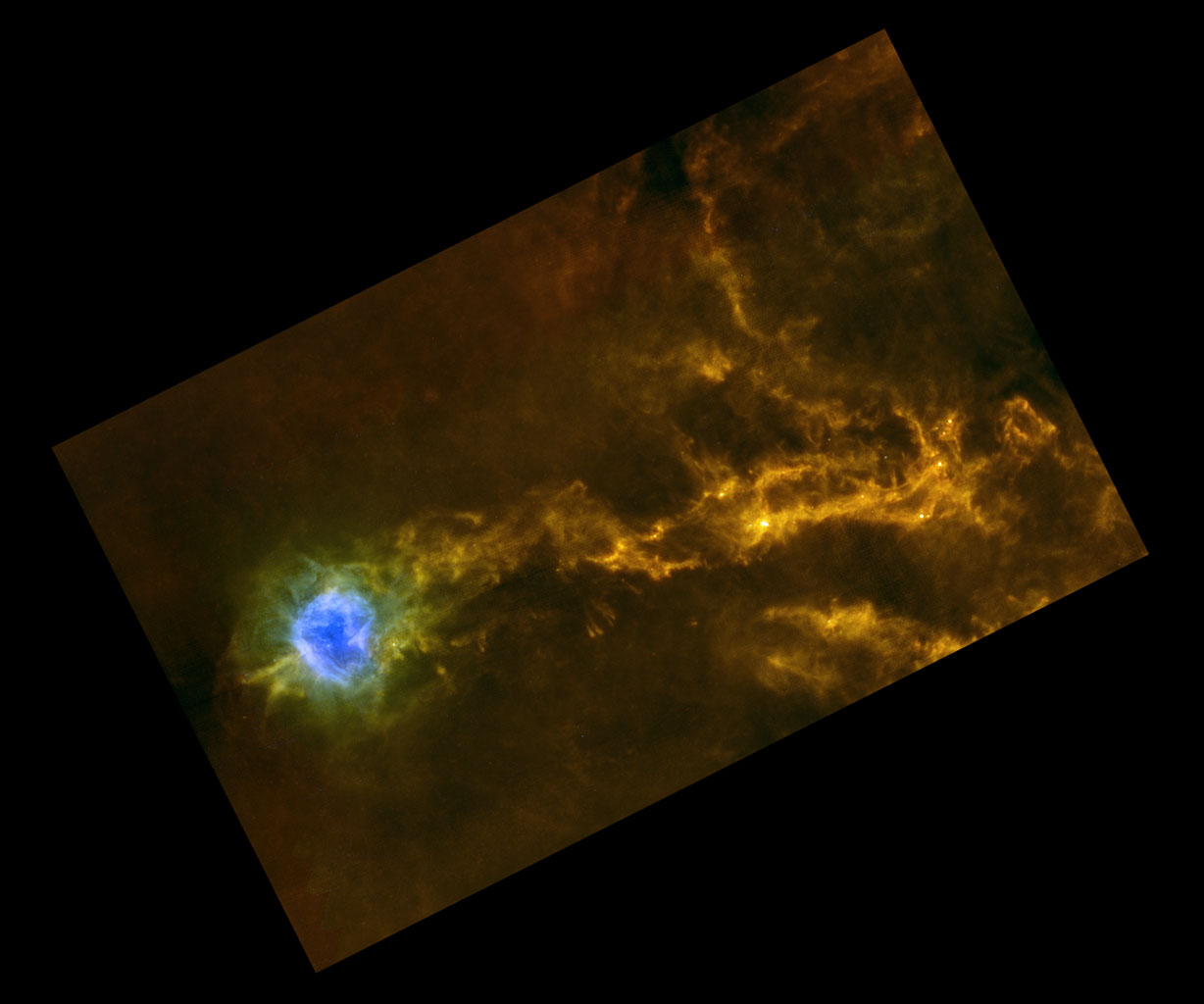IC 5146 on:
[Wikipedia]
[Google]
[Amazon]
IC 5146 (also Caldwell 19, Sh 2-125, Barnard 168, and the Cocoon Nebula) is a
 IC 5146 is a stellar nursery where star-formation is ongoing. Observations by both the Spitzer Space Telescope and the
IC 5146 is a stellar nursery where star-formation is ongoing. Observations by both the Spitzer Space Telescope and the
reflection Reflection or reflexion may refer to:
Science and technology
* Reflection (physics), a common wave phenomenon
** Specular reflection, reflection from a smooth surface
*** Mirror image, a reflection in a mirror or in water
** Signal reflection, in ...
/ emission nebula and Caldwell object in the constellation Cygnus. The NGC description refers to IC 5146 as a cluster of 9.5 mag stars involved in a bright and dark nebula. The cluster is also known as Collinder 470. It shines at magnitude +10.0/+9.3/+7.2. Its celestial coordinates are RA , dec . It is located near the naked-eye
Naked eye, also called bare eye or unaided eye, is the practice of engaging in visual perception unaided by a magnifying, light-collecting optical instrument, such as a telescope or microscope, or eye protection. Vision corrected to normal ...
star Pi Cygni, the open cluster NGC 7209 in Lacerta
Lacerta is one of the 88 modern constellations defined by the International Astronomical Union. Its name is Latin for lizard. A small, faint constellation, it was defined in 1687 by the astronomer Johannes Hevelius. Its brightest stars form a "W" ...
, and the bright open cluster M39. The cluster is about 4,000 ly away, and the central star that lights it formed about 100,000 years ago; the nebula is about 12 arcmins across, which is equivalent to a span of 15 light years.
When viewing IC 5146, dark nebula
A dark nebula or absorption nebula is a type of interstellar cloud, particularly molecular clouds, that is so dense that it obscures the visible wavelengths of light from objects behind it, such as background stars and emission or reflection nebu ...
Barnard 168 (B168) is an inseparable part of the experience, forming a dark lane that surrounds the cluster and projects westward forming the appearance of a trail behind the Cocoon.
Young Stellar Objects
 IC 5146 is a stellar nursery where star-formation is ongoing. Observations by both the Spitzer Space Telescope and the
IC 5146 is a stellar nursery where star-formation is ongoing. Observations by both the Spitzer Space Telescope and the Chandra X-ray Observatory
The Chandra X-ray Observatory (CXO), previously known as the Advanced X-ray Astrophysics Facility (AXAF), is a Flagship-class space telescope launched aboard the during STS-93 by NASA on July 23, 1999. Chandra is sensitive to X-ray sources 1 ...
have collectively identified hundreds of young stellar objects. Young stars are seen in both the emission nebula, where gas has been ionized by massive young stars, and in the infrared-dark molecular cloud that forms the "tail". The most-massive stars in the region is BD +46 3474, a star of class B1 that is an estimated 14±4 times the mass of the sun.
Another interesting star in the nebula is BD +46 3471, which is an example of a HAeBe star, an intermediate mass star with strong emission lines in its spectrum.
References
External links
* * * {{Cygnus (constellation) Diffuse nebulae Reflection nebulae Emission nebulae Open clusters 019b 5146 Cygnus (constellation) Sharpless objects Star-forming regions